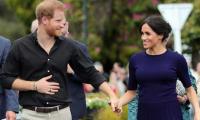The book titled ‘Cheeni Saqafat Kay Tabinda Nuqoosh’- (gleaming gems of Chinese culture)- authored by S. M. Hali, is a comprehensive account of the various aspects of the rich Chinese Culture, various traditions, customs and mores. The author has thoroughly researched the ancient roots of the diverse history of the tradition and culture whose specimens are still prevalent. Since the author has visited China on numerous occasions and visited various parts of the country, his personal impression impressions and research make the book authentic and composite.
The book is divided into thirteen chapters, which cover the multifarious aspects of Chinese culture in full detail. The chapter on Art comprises research on Chinese Embroidery, its various forms, symbolism and representation. Four traditional styles have been discussed: Suzhou, Hunan (Zhiangzhio), Guangdong (Youzhio) and Sichuan (Shuzhio).
The art of traditional Chinese painting, its linkage with the art of calligraphy, classic presentation of landscape which differs from region to region has been discussed. Calligraphy, Painting and poetry are interrelated while the artist authenticates his creation with his seal. The art and history of cutting seals has also been discussed in detail. Wood carving is an ancient Chinese art, which was perfected many centuries ago and has been carried on by master wood carvers, who have created masterpieces. The Scholar’s Four Treasures receive special mention. Chi-Pao Traditional Dress of Chinese Women, its origin, development, different styles and conformity with fashion have been brought out by the author. Art of Chinese Knot making is specific to ancient China. The various designs, their symbolism and significance are essential to appreciate the Chinese knot making as an art form.
Dragon and Lion have a significant position and status in Chinese Traditions thus they receive their due notation in various forms of traditional Chinese art; be they embroidery, painting, wood carving, sculpture and even cuisine. Chinese lantern, their significance, origin and various types make interesting reading. New Year paintings continue to be a part of Chinese culture. The art of making dough figures has an interesting background and continues to enthrall old and young alike. Chinese furniture is in great demand in the west but it has special significance in Chinese culture and modern Chinese also seek forms of traditional furniture.
Hand fans depict a specific part of tradition. Their origin, various types and uses other than fanning, which includes as a prop for story tellers or by traditional Chinese dancers is a fascinating description.
Traditional Chinese Toys, some of which are still popular have been described with intricate details. The Chapter on traditional Cuisine is interesting because various forms of Chinese cuisine form an essential part of culture. Menshi and hot pot as well as the use of chop sticks draw the attention of the reader. Traditional tea ceremony, its significance in Chinese society in both ancient and modern times, the origin of tea, its medicinal properties and various types has been discussed in the book.
A full chapter has been dedicated to traditional Festivals, which include the Chinese Lunar Year, Chinese Spring Festival, Lantern Festival, Chinming Festival, Duanwu Festival and the Chongyang Festival. Their importance, background and symbolism as well as philosophy have been explained.
Traditional Chinese Medicine and how it differs from western medicine, what are the different types of treatment has been amply explained. Traditional Chinese Musical Instruments, their place in Chinese culture and origin make interesting reading. Opera is a very important part of Chinese culture, its ethos, the different types, specific make up; their symbolism, opera masks and the use of shadow puppets have been painstakingly researched and described in the book.
China has scores of historical tourist attractions but six of them have been described in this book, including the Great Wall, Giant Buddha of Lashan Dafu, Stone Statues of Dazu and the traditional Hutongs of Beijing.
Folk games of China merit special attention. Games like Kung Fu, Kongzhu and Jianzi have been discussed. A whole chapter has been dedicated to this which includes their specific customs including wedding ceremonies. Keeping crickets as pets is specific to China and was practiced in ancient times by royalty and is now a popular practice among Chinese. The author has dedicated a chapter to discuss Chinese Etiquette, which is essential for visitors to China, while meeting or greeting them, dining in their homes or bringing gifts. Some social taboos have also been presented.
The foreword of the book has been written by Uxi Mufti, Founder of Folk Culture Institute Pakistan and an authority on culture.
The book will serve as bridge between the people of Pakistan and China and will go a long way into enabling Pakistanis to understand their iron brother—Chinese nation. It is understandable that the author has written the book in Urdu so that more Pakistanis can benefit from it.
Reviewed by Syed Anis Ahmad
A representational image of young people working in a company. — AFP/FileIslamabad: The National Vocational and...
Ambassador of Kazakhstan to Pakistan, Yerzhan Kistafin speaks during a book launching ceremony. —...
Ahmed Jawad A A. Rabei, ambassador of the State of Palestine , VC Riphah University Prof. Dr Anis Ahmed and Dr...
The Department of Food Science & Technology building in the University of Karachi. — University of Karachi...
The printed papers of cigarettes can be seen in a cigarette factory. — FBR Website/FileIslamabad: Health activists...
This representational image shows an array of colourful flowers on display on December 3, 2023. — Facebook/Parks and...







